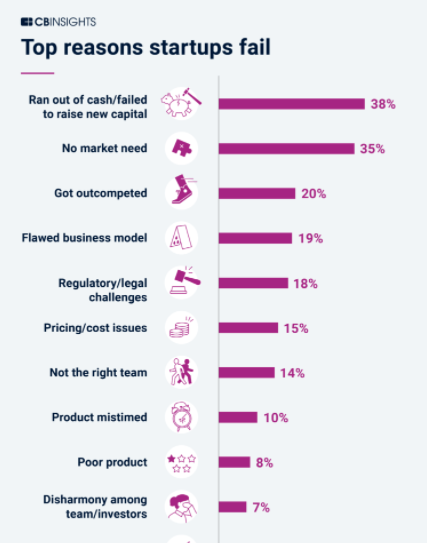Using Customer Discovery to Reach Product Market
The top reasons why new products fail are the lack of a market need and running out of cash in pursuit of one.
That's not to say most failed products aren’t useful or novel – often they are. Instead, the failure stems from an incorrect assumption about one key aspect of a market need.
The problem is important
The solution compliments the customer environment
The buyer is willing and able to purchase
If one leg of the stool is missing, your product will struggle to gain traction. For example, your product may be addressing an important problem but adoption is unlikely if it fails to interoperate with other core customer systems.
To reach product-market fit, identify and concentrate on customer segments where the three aspects of a market need are true.
#1 - The problem is important
Often, the true competition for our product is not the alternative solutions. It is the competing problems that occupy our customer’s mindshare and wallets.
To validate that a problem is important, investigate the forces that are driving change and the consequences of inaction.
#2 - The solution compliments the customer environment
B2B products must serve multiple stakeholders from administrators to end users, all of whom expect interoperability with other programs.
To drive successful implementations, develop robust integrations for the systems that are important to your target segment. Also, build mitigation plans for adoption roadblocks, such data silos, manual workarounds, and resistors to change.
#3 - The buyer is willing and able to purchase
Nearly all organizations manage budgets in categories with procedures for purchasing and competing interests for dollars.
To grow a successful product, identify your customer’s go-to marketing channels and influencer networks. Develop sales strategies that are tailored to your buyer’s natural decision-making process.
Customer Discovery Model
The key to identifying viable market needs is segmentation. By contrasting the three components of a market need across categories, companies can identify where the need is greatest, the impediments are surmountable, and the funding is ample.
Segmentation also helps companies accelerate market penetration by generating customer references and establishing repeatability in the acquisition model.
At Product Vectors, we’ve conducted thousands of interviews with economic buyers. The most common heuristic that buyers use when evaluating a new product:
“Show me - someone like me - using your product with success.”
This reaction reinforces the key to reaching product-market fit: concentrating on beachhead segments. Product Market fit is reached when you have a repeatable acquisition model and referenceable group of successful pilots or implementations.
Read more about Product Vectors’s approach to customer discovery or schedule a consultation.


